McMurdo Station, Antarctica
September 4, 2016
I’ve been in Antarctica just over a week now. We spent the first several days in various training classes and organizing the logistical support we will need for our work. That always takes about 4 or 5 days. Yesterday was the first day we were going to attempt to fly our drones. We need a little bit of wind to make the takeoff easier for the drones (and pilot) and unfortunately, and very strangely since Antarctica is the windiest continent, the wind was almost calm all day yesterday. Today is much the same weatherwise.
Despite the light winds yesterday Mark and I did drive from McMurdo Station to the Pegasus ice runway, where we will be doing all of our drone flights. The ice runway is located on floating glacier ice called an ice shelf. The ice there is hundreds of feet thick. Because of the thicker ice over the ice shelf compared to the thin snow cover over volcanic rocks in McMurdo or the several feet thick sea ice in McMurdo Sound the ice shelf is usually the coldest location around McMurdo Station. The temperature difference between the ice shelf and McMurdo yesterday was really impressive. In McMurdo the temperature was around -20 degrees F but on the ice shelf the temperature was in the -40s degree F.
If you go to Antarctica on a regular basis it helps if you like, or at least don’t mind, cold weather. As my family, friends, and students in my classes can attest, I really, really like cold weather. I always look forward to days at home when the temperature drops below 0 degrees F (which doesn’t happen often enough in my opinion). In fact, I love spending as much time outside as I can when it is really cold as you can see from the next two pictures.
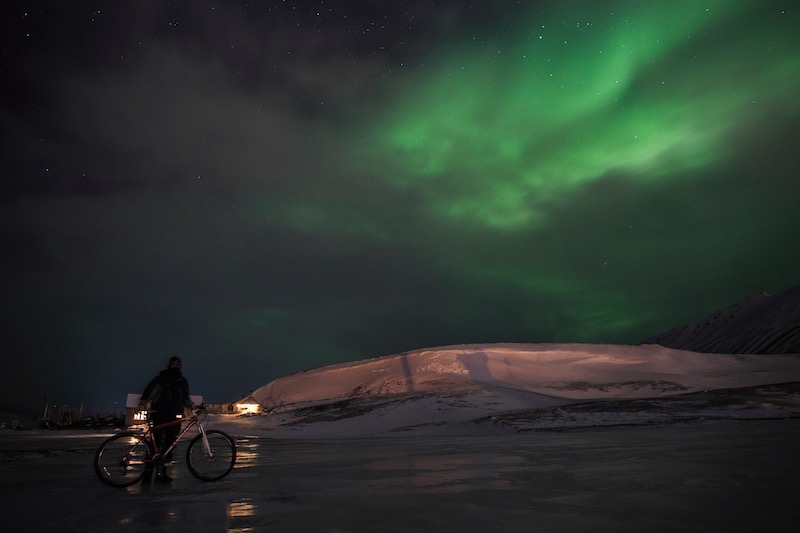
John under the Northern Lights while biking in Svalbard, Norway in early February. The temperature when this photo was taken was around 0 degrees F.
One of the things I love about coming to Antarctica at this time of year, at the end of winter, is that it can be really cold. Unfortunately our first week here was mild, by Antarctic standards, with the coldest temperature we saw before yesterday being -20 degrees F. The warmest temperature we experienced was an absolutely unacceptably warm +3 degrees F.

John after taking an hour walk around town a few nights ago when the temperatures was in the negative teens degree F. (Yes, I like taking selfies of my self when I’m coated in ice 🙂
Yesterday marked a change in the weather. The temperature in McMurdo was in the low -20s degree F when I woke up.

View across the sea ice from the edge of McMurdo Station just before sunrise. It was a bit colder than -20 degrees F when I took this picture yesterday.
Before we drove out to the Pegasus runway Mark told me that the temperature at a weather station on the ice shelf, that we’d drive past, was -42 degrees F. We were both really excited to get out in these cold temperatures. As we made the 30 minute drive to the runway I held my handheld weather monitor, a Kestrel 4000, out of the van window to check the temperature as we drove by the weather station.

Unfortunately I didn’t take a picture of my Kestrel as we were driving across the ice shelf yesterday but here is a photo of it from in town today. A nice sunny -24 degrees F with almost no wind.
On our drive to Pegasus yesterday the Kestrel showed that the temperature was -47 degrees F. Both Mark and I were really excited that it was this cold and we stopped immediately to get out of the van and “enjoy” the bitter cold.

John on the Ross Ice Shelf when the temperature was -47 degrees F. When I sent this picture to my 7 year old daughter, Sabrina, her comment to my wife was that the temperature was as cold as Dad is old. I took that to mean that she thought it was pretty cold out.
This was the coldest temperature Mark had ever experienced and was only 7 degrees F warmer than the coldest temperature I’d ever experienced. To be honest, it didn’t feel that cold. The fact that there was no wind and the sun was out helped make the temperature much more tolerable than the number would indicate. Of course, we were also wearing a lot of cold weather clothing which helps make dealing with such cold temperatures much easier. As we drove to the runway and then back to McMurdo in the evening we observed big fluctuations in the temperature from as warm -30 degrees F to as cold as -55 degrees F.
Because it can get so cold in Antarctica everyone here takes the weather seriously and there are several things that are done to help people cope with the cold. First, the weather is rated in 3 levels – condition 1, 2, and 3.
Condition 3 is “good” weather with winds less than 55 mph, a wind chill temperature warmer than -75 degrees F, and visibility greater than 1/4 mile. During condition 3 weather you are allowed to travel anywhere on station and out to the outlying areas like the runways.
Condition 2 weather occurs when the wind speed is between 55 and 63 mph, or the wind chill temperature is between -75 and -100 degrees F, or the visibility is less than 1/4 mile. During condition 2 weather you are allowed to go between buildings on the station but you must checkout for any travel beyond the base.
Condition 1 weather occurs when the wind speed is greater than 63 mph or the wind chill temperature is less than -100 degrees F, or visibility is less than 100 feet. With these conditions you are not allowed to leave the building you are in. I’m sad to say that I’ve never experienced condition 1 weather during all of my previous Antarctic trips but maybe if I’m lucky I’ll get to experience condition 1 weather on this trip. Signs in many of the buildings indicate the current conditions.
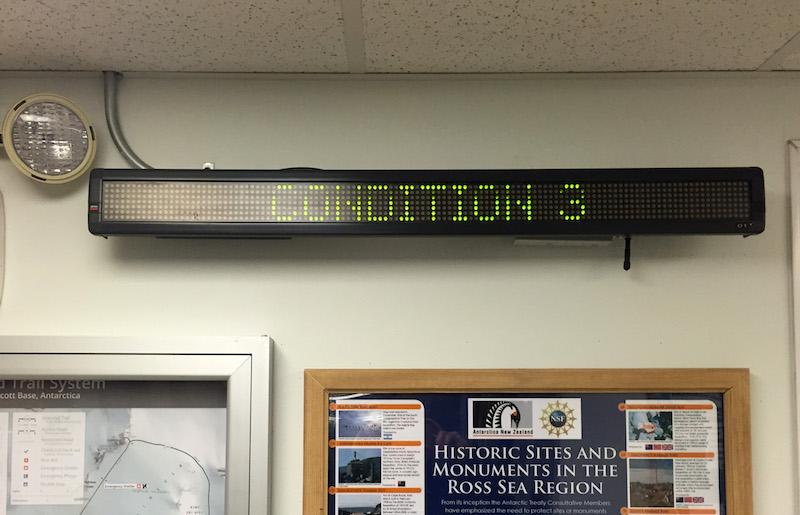
Weather sign in the main building in McMurdo. On this day there were no restrictions on outdoor activities because the weather was condition 3.
The weather conditions are also indicated on the station intranet and on the local TV channels.
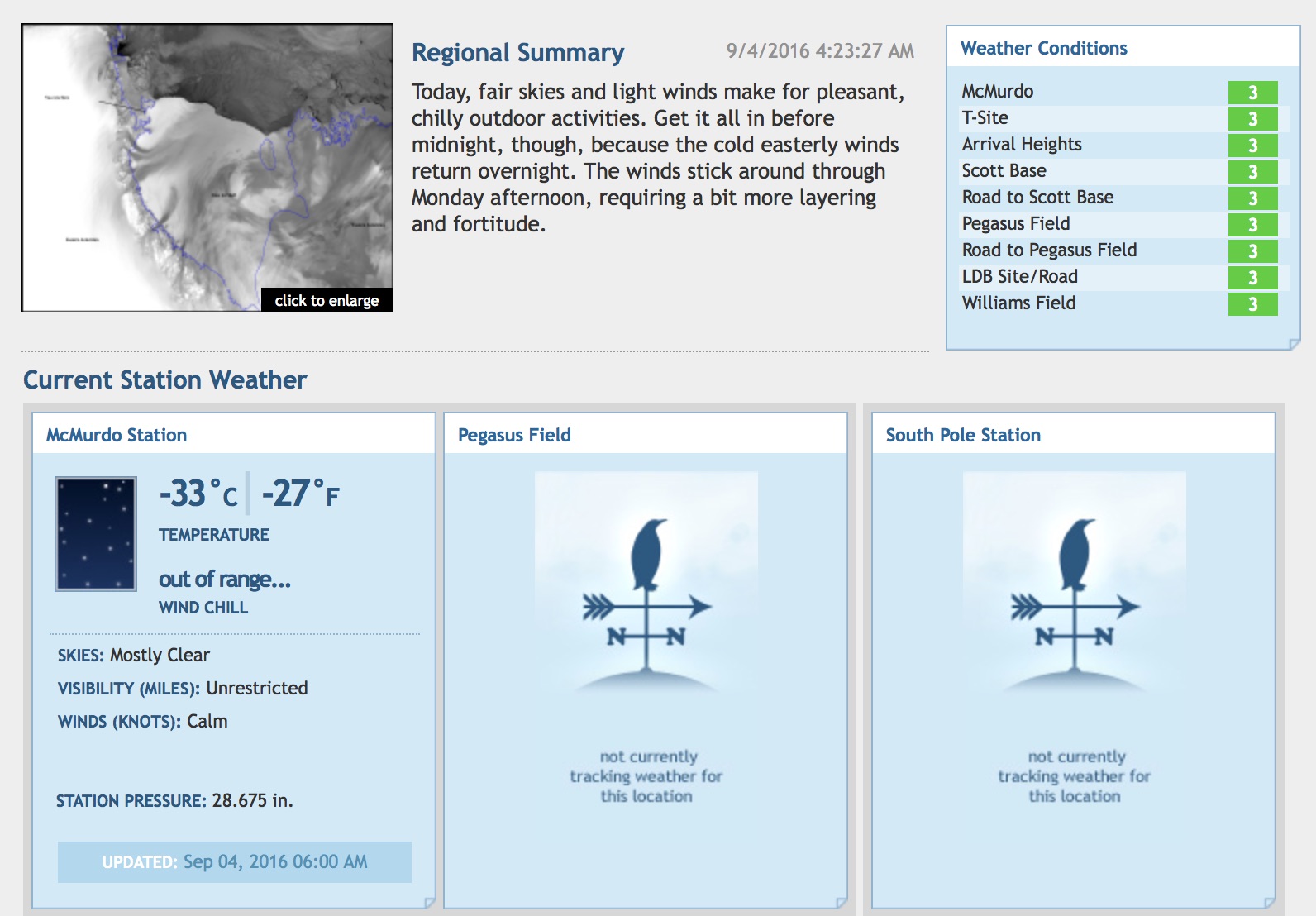
McMurdo Station intranet weather page showing a summary of the current weather, the weather conditions at various locations around town (all condition 3 on this day), and the current weather observation.
There is a weather station mounted on the roof of the Crary lab and I’ll often look at the weather display for this weather station to see the current conditions.
The cold temperatures that can occur in Antartica means that if you touch metal with your bare hand you can quickly get frostbite. As a result many of the door handles are coated with a thick rubber to insulate your hand from the metal.
To help keep the buildings on station warm almost every building has two doors at each entrance. The first door leads from the outside into a small entryway. You will come through that door, close it, and then open the second door that leads to the main interior of the building.
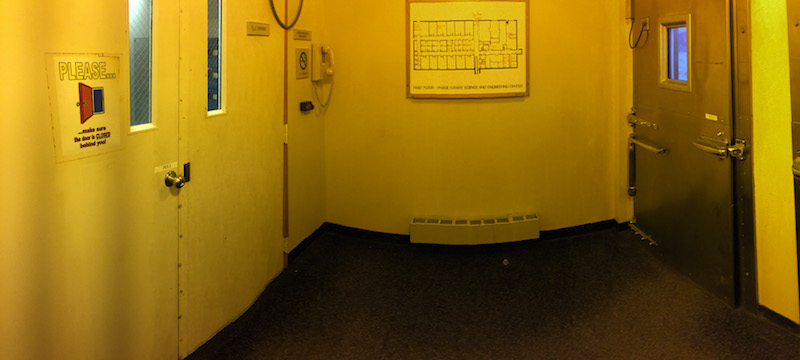
Double door entryway to the Crary Lab in McMurdo. Notice that the outside door (on the right) is similar to the door you’d find on a walk-in industrial freezer, except in this case the door is keeping the cold out rather than keeping it in.
Not only are people impacted by the cold weather here. The vehicles also suffer from the cold. All of the trucks on station have electric heaters for their engines and whenever you shutoff your vehicle you need to plug in the electric heater to keep the engine warm. If you don’t do this it is very likely that you won’t be able to restart your truck when you need it. If you need to stop someplace where there are no electric plugs you need to keep your vehicle idling rather than shutting off the engine.

All vehicles need to be plugged in when they are parked so that the electric heater can keep the engine warm enough to start.
When a C-17 military transport plane (like the one we flew on last week to get to Antarctica) flies to McMurdo it never shuts off its engines while it is on the ground here. After the plane lands it taxis to the end of the runway. All of the passengers get off and the cargo is unloaded and then any northbound passengers and cargo are loaded. During this entire time the engines are kept running.
Hopefully in the next day or two the winds will pick up and Mark and I will get a chance to put our drones in the air and start making some weather measurements.
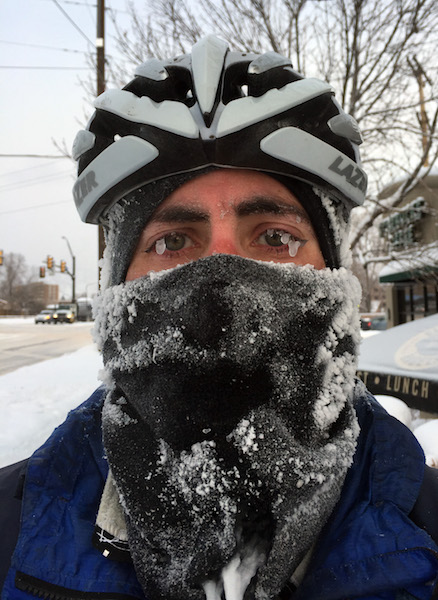



Wow very expressive
Thanks, John!
Based on the temperatures you are experiencing, and on the thickness of the ice shelf, do you have an opinion that you are willing to share with regard to global warming?
Oh… it’s 9:17 PM and 71.4 F here in Wisconsin.
Hi Todd,
Glad to see that it is 100 degrees F warmer in WI than it is here in Antarctica.
As for your question about global warming – it really isn’t reasonable to try and draw conclusions about global climate change from observations at a single location. Records of past climate change and projections of future climate change indicate that some locations may experience changes that differ from most of the rest of the planet, so trying to infer a global signal from a single location is a bad idea. It is also inappropriate to try and link short term observations (such as my experiences in the blog) to any climate change signal. There is lots of variability in the weather on daily, seasonal, and annual time scales and we need long periods of observations (many decades or more) to identify meaningful trends in the weather records at a given location. As our climate changes the likelihood of certain weather events may increase or decrease but in my opinion it is usually not appropriate to attribute an individual weather event to global change. Analysis of climate records (both instrumental and from paleoclimate indicators like ice cores) show that any changes in the climate around McMurdo have not been significant over the past 60 years of reliable weather observations. That is in contrast to locations on the Antarctic peninsula that have experienced some of the greatest warming of any location on the planet over the same time period. The explanation of why some places like McMurdo have not experienced any significant climate change while other locations on the continent have is a hot topic of research for Antarctic climate scientists.